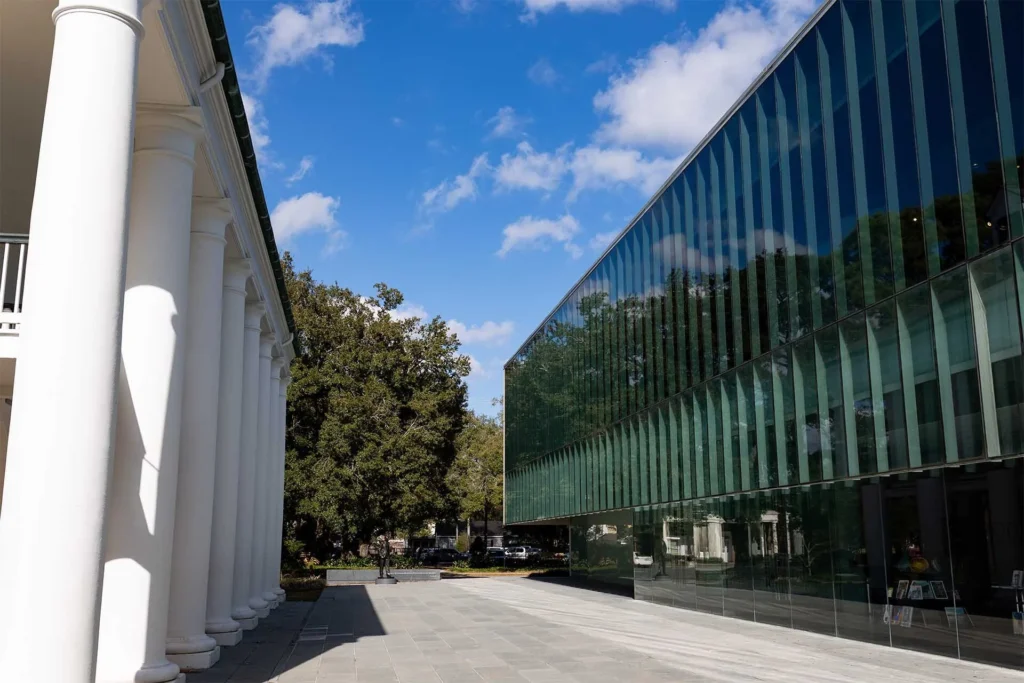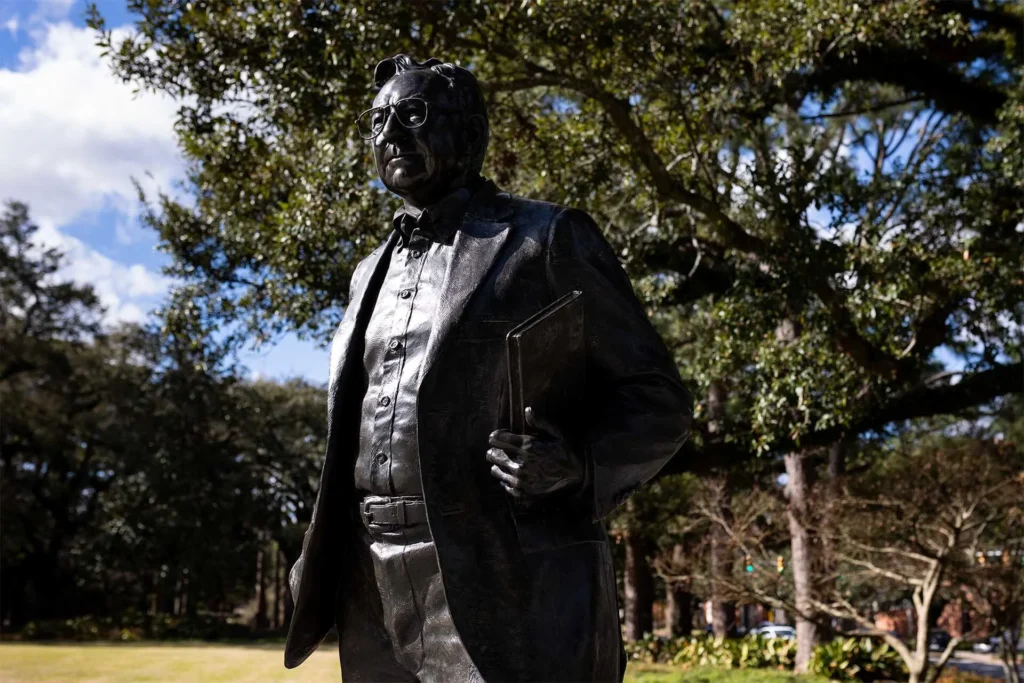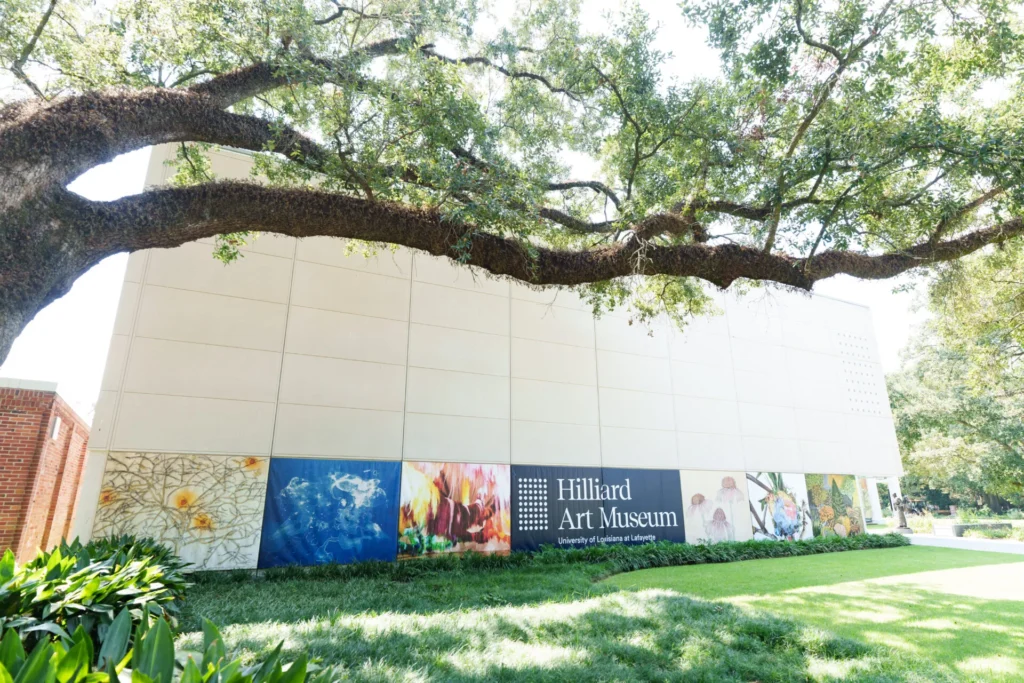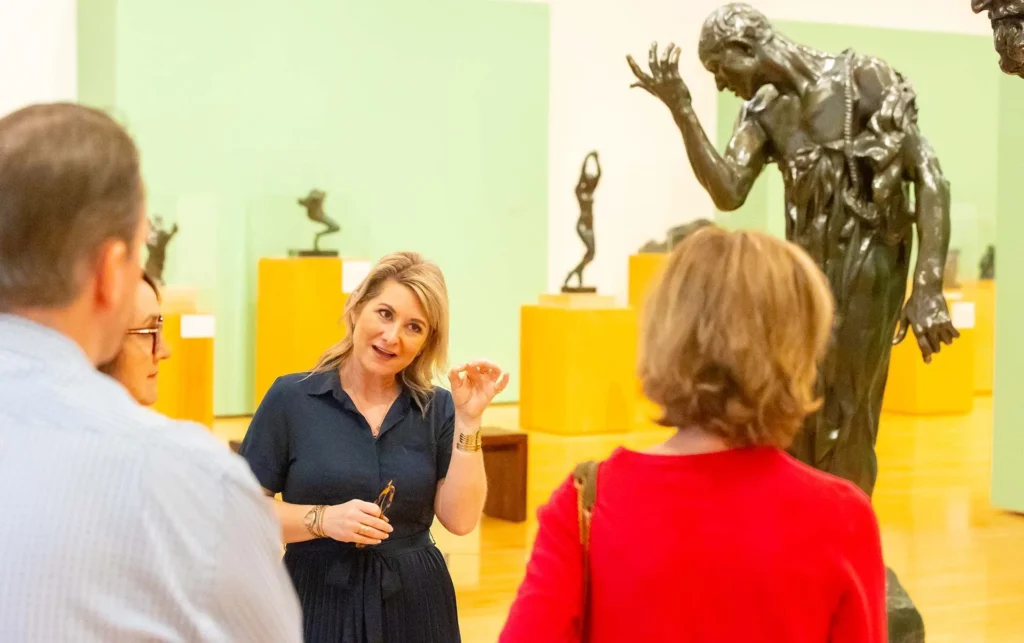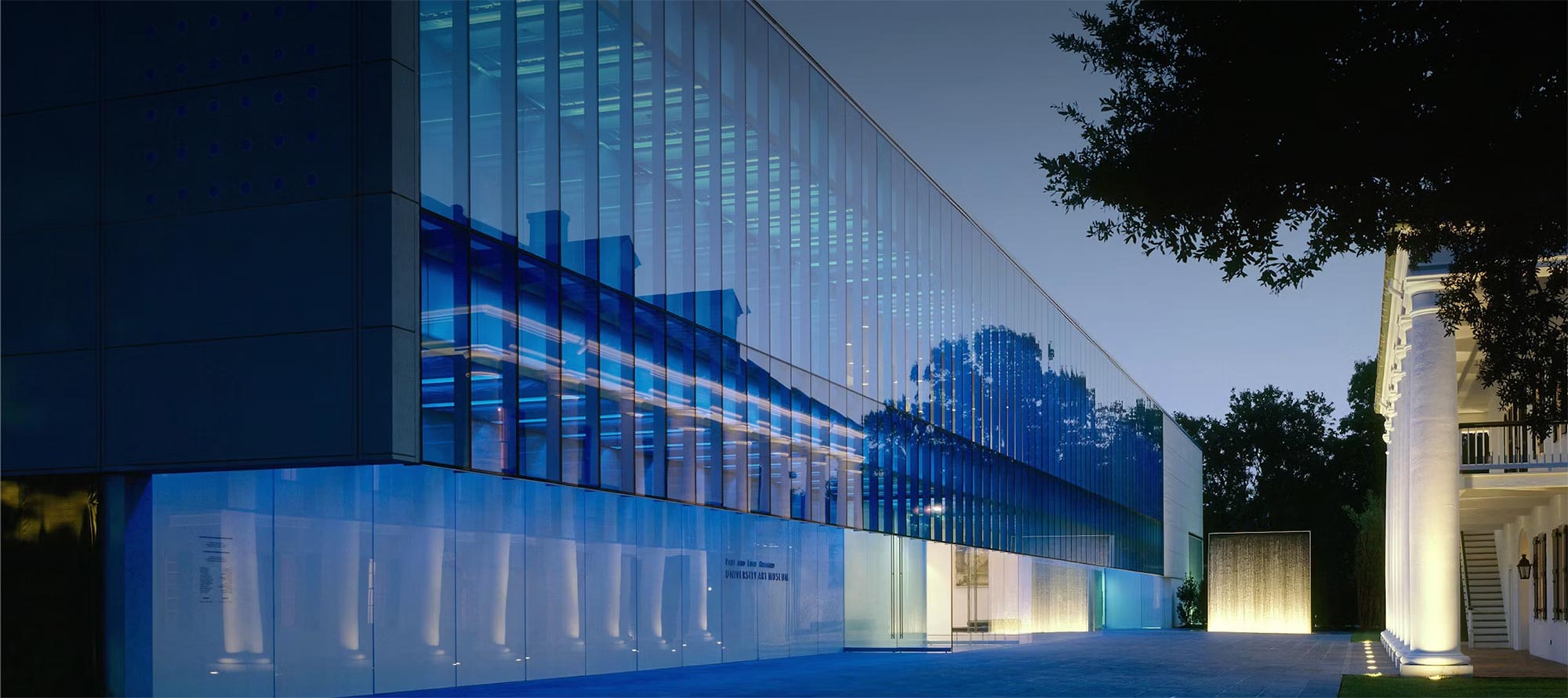
A Harmony of Contrasts
As Executive Director Molly Rowe says, “On the museum site alone, the past confronts the future.” The Eskew+Dumez+Ripple contemporary building is sited in a dynamic conversation with the historic structure designed by celebrated Louisiana architect A. Hays Town and the surrounding landscape.The designers integrated the complexity of both the structures and the social context inherent in the site.
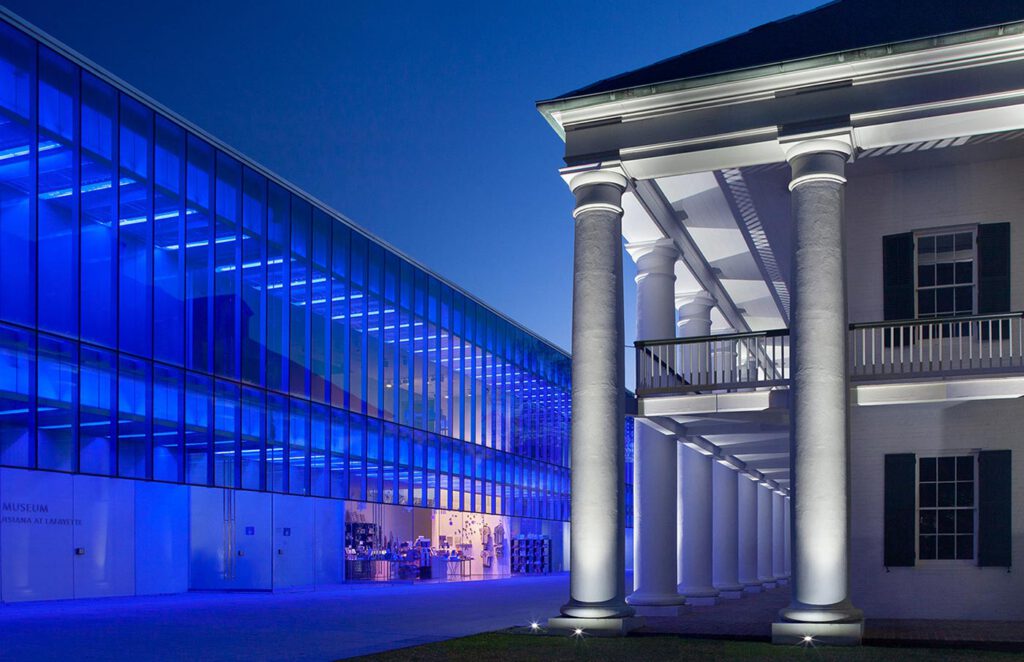
The Art Museum Building
The A. Hays Town building was designed as a replica of the Hermitage Plantation, a 19th-century Greek Revival structure, and brings with it all the connotations of the region’s intricate past. It is a space where the contrasts create a harmony and rhythm through materiality. At night, the building is bathed in blue light, contrasting the traditional warmer tones of the A. Hays Town building. The glass facade lends the space an airy openness, shifting from opaque to translucent with the changing light of the day—quite literally reframing how the past is reflected as time moves forward across the space. At times, it reflects the past and world outside; at others, it draws the eye inward.
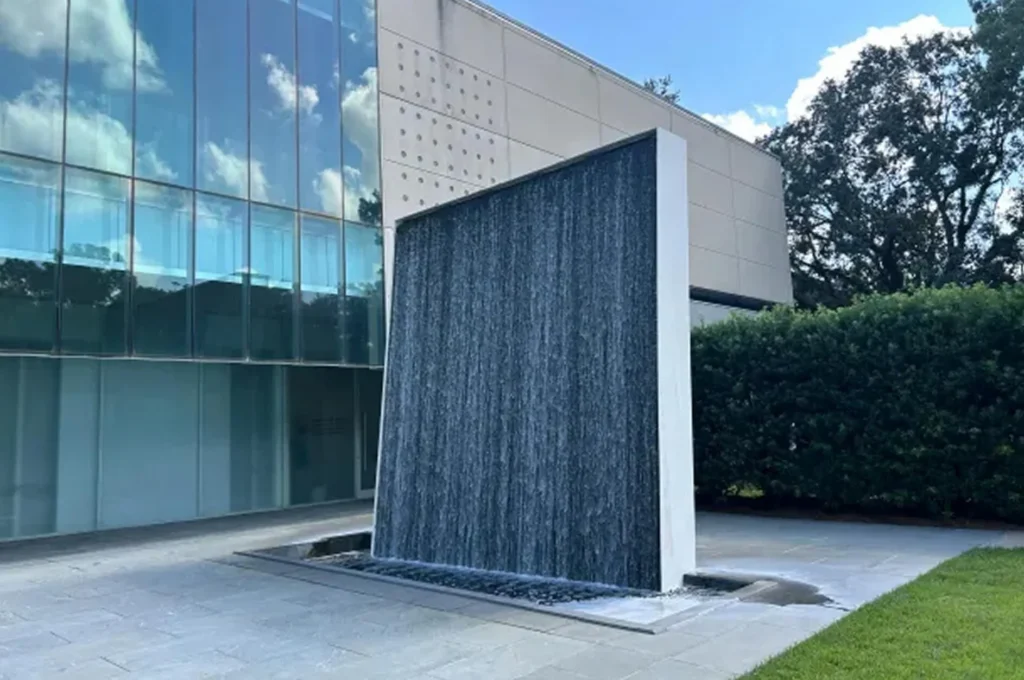
The Water Wall
One of the highlights on the grounds is the Water Wall, a 13-foot square panel framed in white steel, through which whitewater flows. Viewed on a long linear pathway between A. Town Hays building and the new Hilliard building and set against a backdrop of trees, it integrates the natural with the built environment. The water feature provides a visual transition between the contemporary museum building and the historic structure, while at the same time, it serves as a focal point between these two spaces that invites the natural world in.
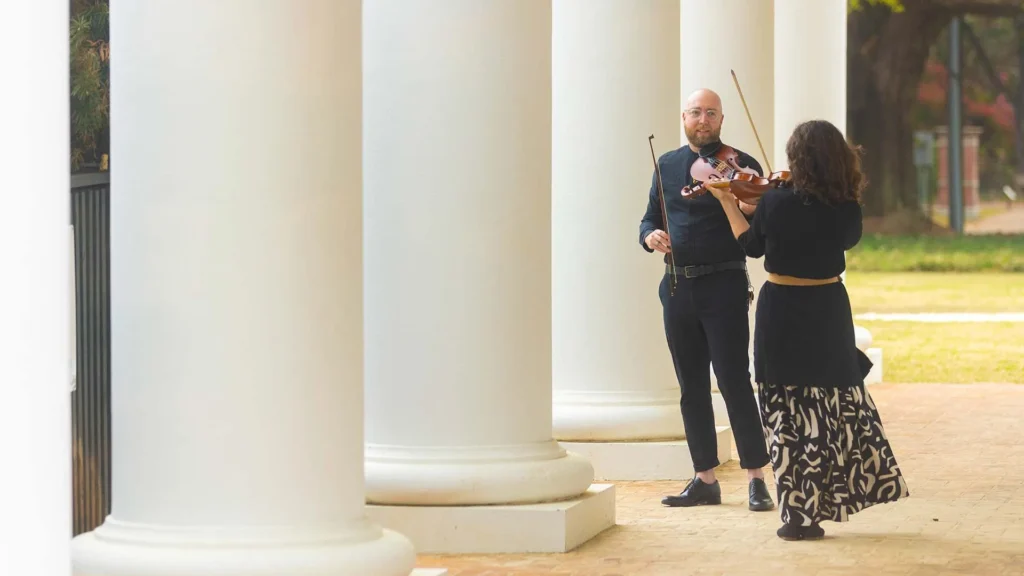
The Evolution of the Space
The original structure, called the Art Center of Southwest Louisiana, opened in 1968. It was designed by A. Hays Town on land gifted in 1964 by philanthropist Maurice Heymann. In 2001, Paul and Lulu Hilliard made a generous gift toward the vision of a new museum building. The new Hilliard Art Museum features a contemporary design and opened in April 2004.
